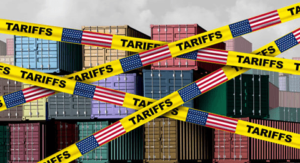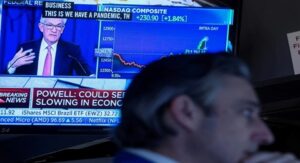
How Silent Debt Crisis is Threatening Developing Economies
Silent debt crisis is engulfing developing economies, threatening their financial stability and stifling growth. Burdened by high levels of external debt, these nations face mounting repayment pressures exacerbated by rising global interest rates and depreciating currencies.
The crisis, often overshadowed by more immediate global concerns, undermines essential public services and impedes infrastructure development. Governments are compelled to divert scarce resources from critical sectors like health and education to service debt obligations, perpetuating a cycle of poverty and economic stagnation.
International financial institutions and creditor nations must urgently address this looming catastrophe to prevent widespread socio-economic turmoil and foster sustainable development in the most vulnerable regions.
Silent Debt Crisis is Engulfing Developing Countries?
The global financial landscape is witnessing a silent but ominous debt crisis brewing in developing economies, particularly those with weak credit ratings. These nations, already grappling with economic instability, are now facing mounting debt that threatens to derail their progress and exacerbate poverty.
This article explores the contours of this crisis through seven critical points, underpinned by statistical data and expert insights.
Read More: Geopolitics of Economic Development in the Middle East
Table of Contents
1. Rising Debt Levels
Developing economies are seeing unprecedented public debt increases, contributing to what some economists are calling a “Silent Debt Crisis”. The International Monetary Fund (IMF) reports that in low-income developing countries, average public debt rose to 50% of GDP in 2022, up from 40% in 2015. This increase is driven by borrowing for infrastructure projects and managing the economic impacts of COVID-19.
Many countries have undertaken large infrastructure initiatives to boost growth and competitiveness, necessitating significant borrowing. Additionally, the pandemic led to high government spending on healthcare, social welfare, and economic stimulus, further raising debt. Economic downturns and global supply chain disruptions have reduced revenues, making it difficult for these countries to service existing debts without additional borrowing.
Read More: The Economics of War
2. High Cost of Borrowing
Countries with weak credit ratings face high borrowing costs due to perceived risks. Their average interest rates on external debt have surged, increasing debt service burdens. For example, Zambia, which defaulted in 2020, now borrows at over 9%, compared to less than 5% for more creditworthy nations. Lenders demand higher interest rates to offset the risk of default, inflating costs for these countries.
Market sentiment and investor perception significantly impact borrowing costs; negative developments like political instability or fiscal mismanagement can further raise rates by eroding confidence. These nations often have limited access to international capital markets, relying on fewer lenders at higher rates. The silent debt crisis exacerbates these challenges, as it adds a layer of hidden financial strain that perpetuates the cycle of high borrowing costs and limited market access.
Read More: Geopolitical Tensions and Economic Projections in 2024
3. Vulnerability to External Shocks
Developing economies face heightened vulnerability to external shocks, such as shifts in commodity prices and global interest rates. The World Bank underscores that a mere 1% uptick in global interest rates can trigger a 0.5% growth downturn in these economies. The COVID-19 crisis, for instance, starkly exposed this susceptibility, with tourism-reliant nations like the Maldives witnessing GDP plunges exceeding 30% in 2020. Many developing nations heavily rely on exporting commodities like oil, minerals, and agricultural goods.
Fluctuations in global commodity prices can profoundly impact export earnings and government budgets, exacerbating their fragility to external pressures. Moreover, changes in global interest rates, particularly those determined by advanced economy central banks, can inflate borrowing expenses and curtail financing accessibility for these countries, intensifying debt burdens and economic woes amidst calamities like the COVID-19 pandemic and natural disasters. The silent debt crisis looms large as a lurking threat, amplifying the challenges faced by developing economies in maintaining financial stability during turbulent times.
Read More: The Rise and Fall of Russia’s Gas Dominance
4. Deteriorating Fiscal Health
The fiscal health of many developing economies is worsening due to increasing debt and budget deficits, contributing to a silent debt crisis. In 2022, low-income countries‘ deficits averaged 7.5% of GDP, up from 4% in 2015, limiting investment in health, education, and infrastructure.
Government spending often exceeds revenue, leading to higher public debt and debt servicing burdens. Inefficient resource allocation, corruption, lack of transparency, and weak governance further exacerbate fiscal imbalances. Additionally, challenges in mobilizing domestic revenue, such as tax evasion and informal economic activities, hinder governments’ ability to fund public expenditures without borrowing, undermining economic stability and growth.
Read More: Europe’s Geoeconomic Challenges
5. Impact on Social Services
The debt crisis, coupled with the silent debt crisis, is critically affecting social services in developing countries. With a large portion of government revenues allocated to debt servicing, funding for public services like education and healthcare is reduced. For instance, Ghana spends almost 40% of its revenue on debt payments, leaving limited resources for essential services. This results in worsening social outcomes, including increased poverty and reduced access to healthcare and education.
Rising debt costs and fiscal constraints lead to underinvestment in crucial sectors, hindering progress toward development goals. Consequently, governments may cut spending on healthcare and education, exacerbating poverty, inequality, and limiting opportunities for vulnerable populations, including women, children, and marginalized communities.
Read More: The Role of Islamic Finance for Sustainable
6. Limited Access to International Capital Markets
Weak credit ratings limit access to international capital markets for developing economies, making funding difficult to secure. They often rely on bilateral loans or international aid, which come with strict conditions. For example, Sri Lanka, unable to access international bonds, turned to the IMF for a bailout, leading to austerity measures and public protests. Investors’ perceptions of credit risk, political stability, economic governance, and debt sustainability play a crucial role in this restricted access.
Adverse market conditions, like interest rate changes and exchange rate volatility, further limit options. High debt levels and fiscal imbalances erode investor confidence, restricting financing access for countries with weak credit ratings. The silent debt crisis exacerbates these challenges, lurking beneath the surface and amplifying the difficulties faced by these economies.
Read More: The Cost of De-Dollarization: Implications for Global Trade and Finance
7. Potential Solutions and Policy Recommendations
International financial institutions and creditor nations should expand debt restructuring and relief programs like the G20’s Debt Service Suspension Initiative to alleviate developing countries’ debt burdens, especially considering the looming silent debt crisis. Developing countries should enhance tax collection mechanisms to boost revenues, potentially increasing tax income by up to 4% of GDP, according to the IMF.
Economic diversification into manufacturing and technology can provide stable revenue streams and reduce dependence on volatile sectors such as commodities and tourism. Strengthening governance and reducing corruption improves public spending efficiency and investor confidence, as indicated by Transparency International’s Corruption Perceptions Index. Enhanced transparency and accountability in public financial management are crucial for sustainable economic growth.
Bottom Line
The silent debt crisis engulfing developing economies with weak credit ratings is a complex and multifaceted issue. Rising debt levels, high borrowing costs, vulnerability to external shocks, deteriorating fiscal health, and limited access to international capital markets collectively exacerbate the economic challenges these countries face.
Immediate and coordinated international action, coupled with domestic reforms, is crucial to mitigate the impact and pave the way for sustainable development amidst this silent debt crisis. The global community must act swiftly to prevent a full-blown economic crisis that could set back decades of progress in poverty reduction and development.





